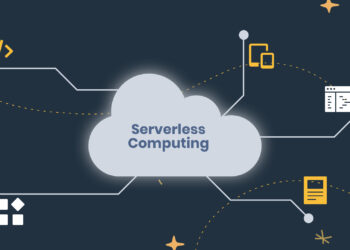In the relentless evolution of information technology, the paradigm has shifted from cavernous, on-premise data centers to the seemingly limitless expanse of the public cloud. For a time, the narrative was one of complete migration—a digital exodus to the servers of tech giants. However, a more nuanced, powerful, and pragmatic reality has emerged, and it reigns supreme: the era of the hybrid cloud. This is not a transitional phase but a strategic destination for businesses seeking the perfect equilibrium of innovation, control, security, and cost-efficiency.
The hybrid cloud model is far more than a simple compromise; it is a sophisticated integration that harnesses the best of both worlds. It pairs the scalable, on-demand resources of public clouds like Amazon Web Services (AWS), Microsoft Azure, and Google Cloud with the security, control, and low latency of a private cloud or on-premise infrastructure. This deliberate fusion creates a unified, agile, and resilient IT environment that is purpose-built for the complexities of modern business. This article delves deep into the architecture, profound benefits, practical use cases, and strategic considerations that have cemented hybrid cloud solutions as the dominant force in today’s IT landscape.
Deconstructing the Hybrid Cloud: A Strategic Integration
To truly grasp why hybrid cloud is the prevailing strategy, we must first define it beyond the simple “public plus private” tagline. At its core, a hybrid cloud is a computing environment where an organization provides and manages some IT resources in-house (on-premise or in a private cloud) and uses other, external resources from a public cloud provider.
The critical element that makes this arrangement “hybrid” is the orchestration and interoperability between these two environments. It’s not about having two separate systems; it’s about creating a single, cohesive ecosystem. This is achieved through a combination of technologies:
- Secure Connectivity: A robust network connection is the backbone of any hybrid cloud. This can be established through a Virtual Private Network (VPN) over the public internet for less sensitive tasks or a dedicated, private connection like AWS Direct Connect, Azure ExpressRoute, or Google Cloud Interconnect for high-throughput, low-latency, and secure data transfer.
- Unified Management Plane: The goal is to manage both public and private resources from a single pane of glass. This is where platforms like Azure Arc, Google Anthos, and AWS Outposts come into play. They extend the cloud provider’s management tools, APIs, and services into the on-premise data center, allowing for consistent operations, policy enforcement, and application deployment across the entire hybrid environment.
- Workload Portability: True hybrid success hinges on the ability to move applications and data seamlessly between the private and public clouds as business needs, costs, or performance requirements change. Technologies like containerization (using Docker and Kubernetes) are instrumental in achieving this, as they package applications and their dependencies into portable units that can run consistently anywhere.
Think of it like a modern hybrid vehicle. It has both a gasoline engine (your private cloud) and an electric motor (the public cloud). The car’s sophisticated internal computer (the management plane) decides which power source to use—or how to blend them—for optimal performance, efficiency, and range. You don’t manage them separately; you just drive, and the integrated system delivers the best possible outcome.
The Foundational Benefits Driving Hybrid Adoption
The widespread move to a hybrid model isn’t a trend; it’s a response to clear, compelling business advantages. Organizations are not just choosing hybrid; they are strategically architecting their future around it for several key reasons.
A. Unparalleled Agility and Strategic Flexibility The single greatest advantage of a hybrid cloud is the business agility it confers. Your private cloud can house your stable, predictable, and mission-critical workloads. Simultaneously, you can tap into the immense resource pool of the public cloud to spin up development and testing environments in minutes, handle sudden traffic spikes without over-provisioning your own hardware, or experiment with cutting-edge services like AI, machine learning, and IoT without a massive upfront investment. This flexibility allows businesses to innovate faster, respond to market changes instantly, and scale operations on demand.
B. Fortified Security and Granular Compliance Not all data is created equal. Many industries, such as finance, healthcare, and government, are bound by strict regulatory and data sovereignty laws (like GDPR, HIPAA, and PCI DSS) that dictate where sensitive data can be stored and how it must be handled. A hybrid model provides a perfect solution. An organization can keep its most sensitive data—customer information, financial records, intellectual property—securely within its private data center, where it has complete control over the physical and network security layers. Meanwhile, less sensitive applications and public-facing workloads can run in the public cloud, benefiting from its scale and services while still adhering to a unified security posture managed across the environment.
C. Intelligent Cost Management and Optimization The cloud was once sold on the promise of being universally cheaper. The reality is more complex. A “lift-and-shift” of all applications to the public cloud can lead to surprisingly high and unpredictable monthly bills. A hybrid strategy enables a more sophisticated approach to cost, known as FinOps (Cloud Financial Operations). Businesses can perform a detailed analysis of each workload to determine the most cost-effective location for it. Stable, long-running applications might be cheaper to run on-premise on hardware that is already paid for (lower TCO). In contrast, applications with volatile, spiky demand are far more cost-effective in a pay-as-you-go public cloud model, a practice known as “cloud bursting.” This prevents over-provisioning in the private data center and avoids paying for idle resources in the public cloud.
D. Enhanced Scalability and Global Performance The public cloud offers near-infinite scalability and a global geographic footprint that is impossible for most companies to replicate. A hybrid strategy allows businesses to leverage this power strategically. For instance, a retail company can host its core inventory and management system in its private cloud but use the public cloud to deploy its e-commerce website across multiple geographic regions, close to its customers. This reduces latency, improves the user experience, and provides the massive scalability needed to handle events like a Black Friday sale without any impact on the core backend systems.
E. Superior Business Continuity and Disaster Recovery The hybrid model offers robust and cost-effective disaster recovery (DR) solutions. Instead of building and maintaining a duplicate, expensive physical DR site that sits idle most of the time, a business can use the public cloud as its recovery target. Critical data and application images can be regularly backed up and replicated from the private cloud to a low-cost storage tier in the public cloud. In the event of a disaster at the primary site, the organization can quickly spin up its entire environment in the public cloud, ensuring business continuity with a much lower recovery time objective (RTO) and recovery point objective (RPO) than traditional methods.
F. Maximizing the Value of Existing Investments Very few established enterprises are starting from scratch. They have significant investments in on-premise hardware, software licenses, and the skilled personnel required to manage them. A hybrid approach respects and leverages these investments. It allows for a phased, gradual modernization rather than a disruptive and costly wholesale migration. Legacy applications that are difficult to re-architect for the cloud can continue to run on-premise, while new, cloud-native applications are built in the public cloud, with both environments working in concert.
Hybrid Cloud vs. Multi-Cloud: Clarifying the Confusion

In discussions about modern IT architecture, “hybrid cloud” and “multi-cloud” are often used interchangeably, but they represent different concepts. Understanding the distinction is crucial for strategic planning.
- Multi-Cloud: This refers to the practice of using services from more than one public cloud provider. For example, a company might use AWS for its primary computing needs, Google Cloud for its big data analytics and machine learning capabilities, and Microsoft Azure for its Office 365 and identity management services. The primary motivation is to avoid vendor lock-in and to cherry-pick the best-in-class service for each specific task.
- Hybrid Cloud: As we’ve established, this refers to the integration of a public cloud with a private cloud or on-premise infrastructure. The key word is integration.
The two are not mutually exclusive. In fact, a sophisticated strategy can be both. An organization could have a private data center (private cloud) that is integrated with both AWS and Azure. This would be a hybrid and multi-cloud environment, offering the ultimate level of flexibility, resilience, and feature choice. The defining characteristic of hybrid remains the deliberate orchestration between the private and public domains.
Real-World Use Cases: Where Hybrid Cloud Excels
The theoretical benefits of hybrid cloud translate into powerful, practical applications across various industries.
A. Dynamic Workloads and Cloud Bursting This is the classic use case. An application runs normally in the private cloud. When demand surges unexpectedly—a news story goes viral, a marketing campaign succeeds beyond expectations—the workload “bursts” into the public cloud, tapping into its on-demand compute resources to handle the spike. Once demand subsides, the workload scales back down, and the public cloud resources are de-provisioned.
B. Big Data Processing and Analytics An organization can collect vast amounts of data from its operations and store it in its secure, cost-effective private cloud. When it’s time to perform complex, computationally intensive analytics, that data can be temporarily moved to a powerful big data platform in the public cloud (like Amazon EMR or Google BigQuery). The analysis is run, insights are generated, and the results are moved back to the private cloud, while the expensive processing cluster is shut down.
C. Development and Testing (Dev/Test) Developers need to be able to provision and de-provision environments quickly. Using the public cloud for Dev/Test sandboxes is ideal. It prevents development activities from consuming resources meant for production workloads in the private cloud and gives development teams the freedom to experiment with the latest tools and services without lengthy procurement cycles.
D. Mission-Critical Applications with Sensitive Data A bank can run its customer-facing mobile app on the scalable public cloud for a great user experience, but all transaction processing and access to sensitive customer account data happens via secure API calls to a legacy mainframe system or database that resides securely within the bank’s own data center.
E. Edge Computing Scenarios In manufacturing, retail, and logistics, computing often needs to happen at the “edge”—closer to where data is generated (e.g., on a factory floor, in a retail store). A hybrid model allows data to be processed locally on small-footprint edge devices for real-time responses. That data is then aggregated and sent back to a central private or public cloud for long-term storage, trend analysis, and model training.
F. Disaster Recovery as a Service (DRaaS) As mentioned earlier, using the public cloud as a failover site for on-premise workloads is a highly popular use case. It democratizes enterprise-grade disaster recovery, making it accessible and affordable for businesses of all sizes.
Navigating the Inherent Challenges of Hybrid Environments

While the benefits are immense, adopting a hybrid cloud strategy is not without its challenges. A successful implementation requires careful planning to mitigate potential pitfalls.
A. Management and Orchestration Complexity Managing disparate environments with different underlying technologies can be complex. Without a unified management plane, IT teams can be left juggling multiple consoles and toolsets, leading to operational inefficiencies and an increased risk of misconfiguration. This is precisely the problem that platforms like Azure Arc and Google Anthos are designed to solve.
B. Security and Compliance Integration Ensuring a consistent security posture across both private and public clouds is paramount. Security policies, access controls, and threat monitoring must be seamlessly integrated. A data breach or compliance failure can occur at the weakest link, which is often the connection point between the two environments.
C. Network Connectivity and Latency The performance of a hybrid cloud is heavily dependent on the quality of the network connecting the on-premise and public cloud environments. A slow, unreliable connection will create latency that can render applications unusable, negating many of the benefits. Investing in a dedicated, private link is often a necessity for performance-sensitive workloads.
D. Cost Management Intricacies While a hybrid model can optimize costs, it can also complicate them. Tracking and attributing costs across on-premise (CapEx) and public cloud (OpEx) models requires sophisticated FinOps tools and practices to prevent budget overruns and “bill shock.”
E. Skills Gap and Cultural Transformation Managing a hybrid environment requires a new set of skills. IT teams need expertise not just in traditional infrastructure but also in cloud architecture, containerization, automation (Infrastructure as Code), and cybersecurity for distributed systems. This often requires significant upskilling and a cultural shift towards a more agile, DevOps-oriented mindset.
The Future is Hybrid and Intelligently Automated
The reign of the hybrid cloud is not a temporary phase. It is the sustainable, long-term architectural choice for the digital age. Looking ahead, the model will only become more integrated and intelligent. The rise of AI for IT Operations (AIOps) will enable hybrid environments to become self-healing and self-optimizing, automatically moving workloads to the most appropriate location based on real-time cost, performance, and security data. The integration with serverless computing and advanced edge capabilities will further blur the lines between environments, creating a single, programmable infrastructure that extends from the central data center to the farthest reaches of the business.
In conclusion, the hybrid cloud model provides an unparalleled blend of control and innovation. It empowers organizations to protect their most critical data assets while simultaneously harnessing the limitless power of public cloud services to build the future. By offering a strategic path to modernize IT without abandoning valuable existing investments, hybrid cloud solutions have rightly earned their place as the dominant, defining architecture of our time.
















